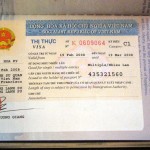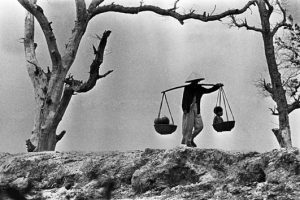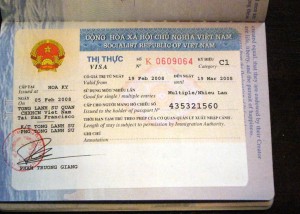Cobia a highlight at new seafood eatery

A new quiet, fish-friendly restaurant focuses on fresh Cobia, which is said to be more delicious than salmon. Luong Thu Huong reports.
Fish is my favourite food. So when my husband suggested we dine at Gio Quan, a new seafood restaurant that just opened near our house, I excitedly agreed.
As its name implies, the restaurant specialises in a variety of dishes cooked with ca gio or cobia. To be honest, I had never heard of this fish before, and so was very curious to taste something that was said to be more delicious than salmon.
Located in a small quiet alley on Phan Boi Chau Street, Gio Quan might not catch the attention of many passers-by because of its modest signboard. However, when we entered the restaurant, which is an old French-style villa, nearly all the tables were occupied.
Notwithstanding its small size, the restaurant’s ambience is one of coziness, thanks to its modest design and furniture. It is divided into two areas: the air conditioned indoors, and the outdoors for customers prefering to savour their food while enjoying fresh air.
What I found most impressive about the decoration of the restaurant was its romantic Japanese daisy trellis, which gently swayed in the soft breezes of autumn as if it was welcoming the customers.
We chose to sit outdoors, where we could sit on a wooden platform and easily keep an eye on our one-year-old daughter while we enjoyed the food.
“Cobia is a new trendy food in Ha Noi these days. It is rich in nutrition and does not cause obesity. So it is favoured a lot by customers,” the waiter said, when I asked him about cobia.
“The adult cobia might weigh up to 30kg and looks like a Vietnamese pork roll (or gio in Vietnamese), and so it is called gio fish.
“Our restaurant gets Gio fish directly from the northern province of Quang Ninh,” he said.
The menu got us really confused as there were many dishes of gio fish, which is also called black bonito or lemonfish. Finally, the waiter suggested that we should try ca gio hap xi dau (cobia steamed with soy sauce and mushroom), ca gio sot me (cobia stewed with tamarind sauce) and nom ca gio rau ma (cobia and pennywort salad). We also ordered a boiled mustard green dish to eat with the fish.
The dishes are not prepared beforehand and are cooked right after customers order their food. Though we had to wait nearly 10 minutes for our first course, we did not mind it as we were getting freshly cooked food.
The dish we were served first was nom ca gio rau ma. Pennywort juice is my favourite drink to get relief from the summer heat, but I had never tried pennywort salad before.
The dish looked pretty large to the two of us, and was nicely garnished with pieces of half-fried cobia on top. Beneath that was a mixture of pennywort, lettuce, bean sprouts and coriander with a sweet-sour sauce.
I was immediately attracted by the taste of cobia. Its flesh was lean, and its sweet flavour, somewhat similar to that of salmon, harmoniously combined with the slight bitterness of the pennywort and the sweet and spicy taste of the sauce.
“It is a really tasty dish to enjoy with my glass of beer,” my husband said, while sipping his drink.
The second dish, cobia with tamarind sauce, did not let us down. The generous servings allowed us to enjoy a clearer taste of the fish. The tamarind sauce was very pleasant.
I thought it would be a great idea to eat the dish with rice. To me there is nothing more attractive than a bowl of hot rice drizzled with sour and sweet sauce. Unfortunately, rice is not included in the menu of the restaurant.
My regret of being unable to enjoy a bowl of rice with tamarind sauce, however, was compensated by the delicious main course, which was cobia steamed with soy sauce and mushroom.
Different from many other kinds of fish, gio fish has lean and firm flesh and does not get crushed while being steamed. Furthermore, the steaming helps the spices to thoroughly permeate the fish.
The fish was finely cooked, with its typical sweet taste and flavour that seemed to be triggered by the distinctive taste of the soy sauce and the mushroom. The dish goes really well with fresh rice vermicelli.
The total cost of our dinner was VND606,000 (US$29), which was pretty high for two people, but we both felt satisfied with our full stomachs and the delicious food we had just enjoyed.
Many other attractive cobia dishes are offered in the restaurant, such as nem ca gio cuon (cobia spring roll), long ca gio xao (stir-fried cobia intestine), and lau ca gio (cobia hot pot).
Besides its speciality, the restaurant also offers a variety of sea food such as oc tien xao (stir-fried king sea snail) and ca son da nuong than hoa (charcoal-grilled stonefish), all of which I have never heard about before, and will come back next time to try!
Gio Quan is often thronged by customers at night, so making reservation in advance is recommended. If you prefer a quiet atmosphere, you’d better visit the restaurant at noon. — VNS












